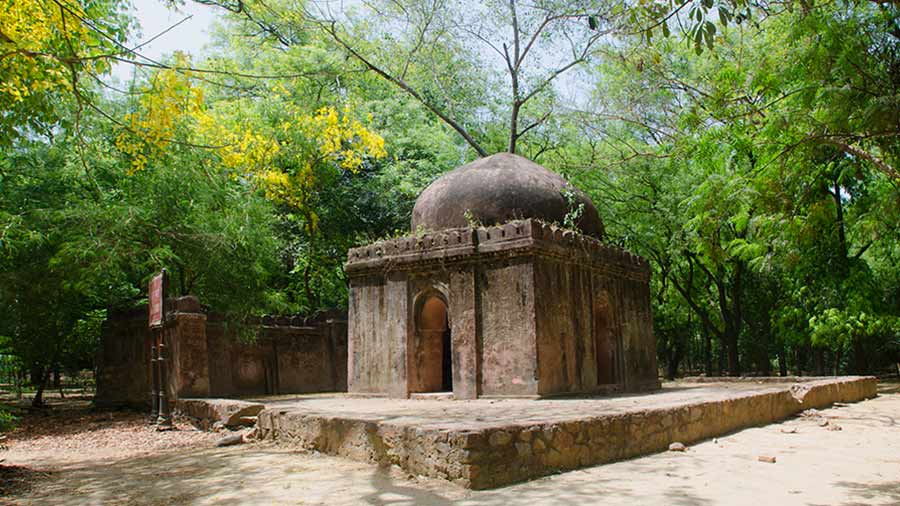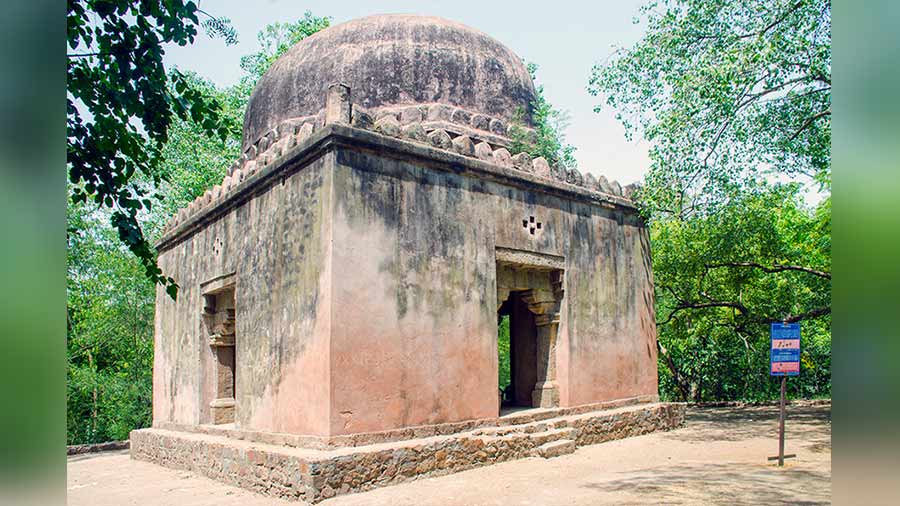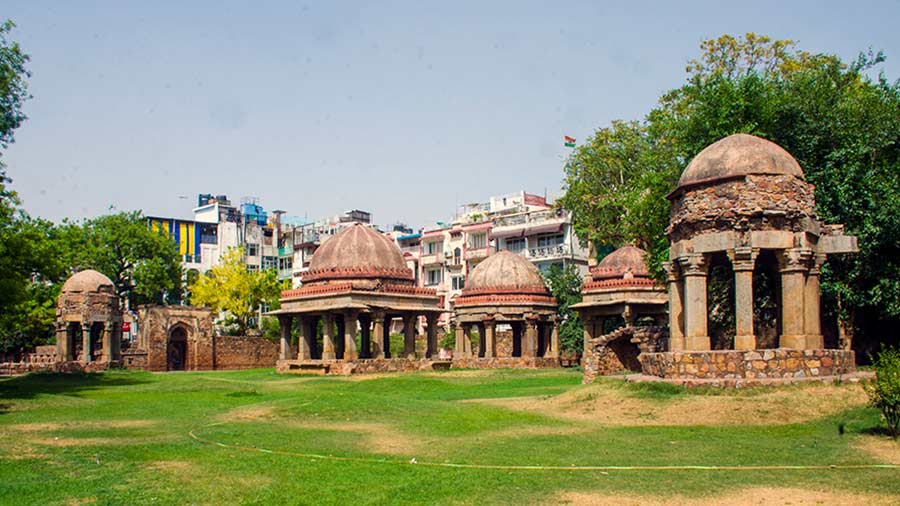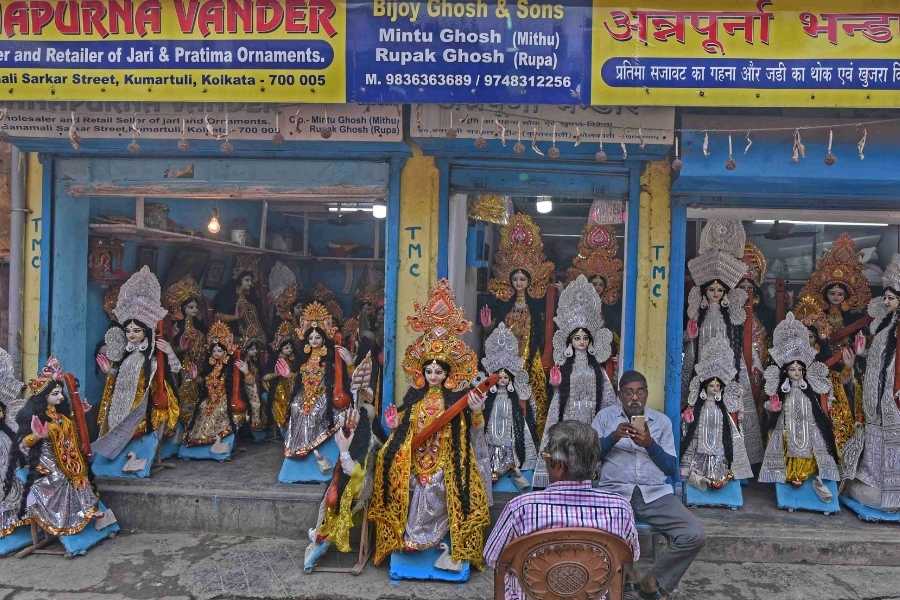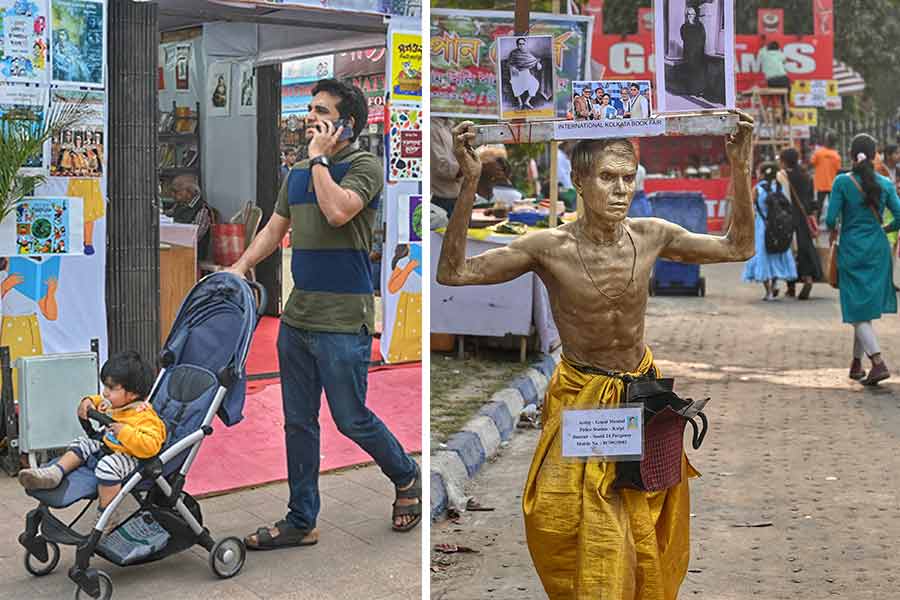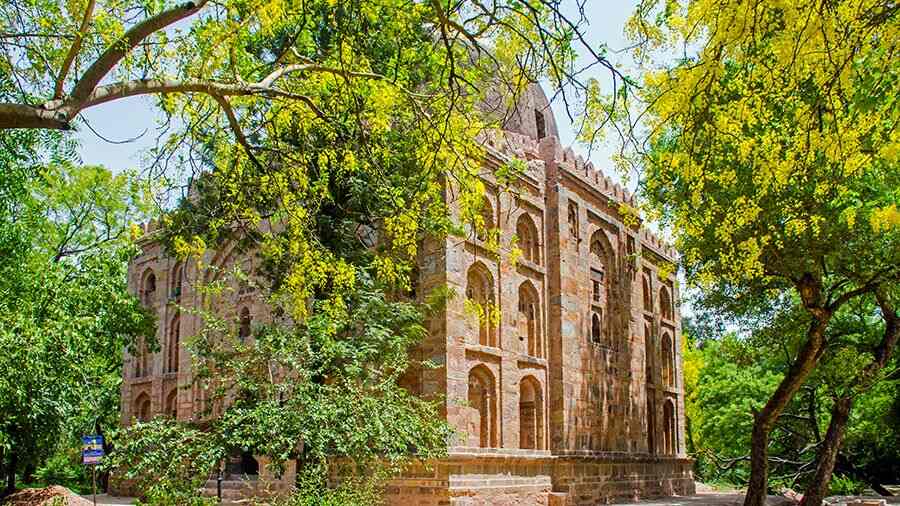
The Bagh-i-Alam Ka Gumbad, the largest tomb in the area, possibly dates back to the Lodhi period. The single-storey building, built in grey sandstone, appears three storeys high from the outside. The entrance is ornamented with blue ceramic work on red sandstone, and the tomb has a large domed ceiling. To the west of the building is a mosque with several open-air graves
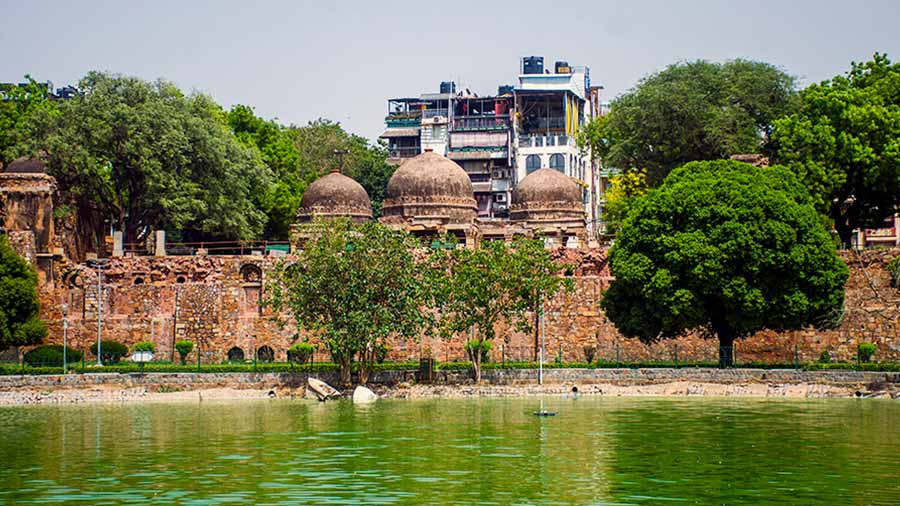
The lake is what gave Hauz Khas its name. Excavated by Alauddin Khalji to provide water to the residents inside the citadel of Siri, it was named Hauz-i-Alai. With the fall of the Khalji dynasty in 1320, the waterbody began silting until Firoz Shah Tughlaq took up the responsibility of restoring the lake, and named it Hauz Khas or ‘the royal lake.’ A collection of tombs, mosques, a ‘madrasa’ and an assembly hall make up the sandstone structure, known as the ‘fort,’ that skirts the lake in an L-shaped pattern
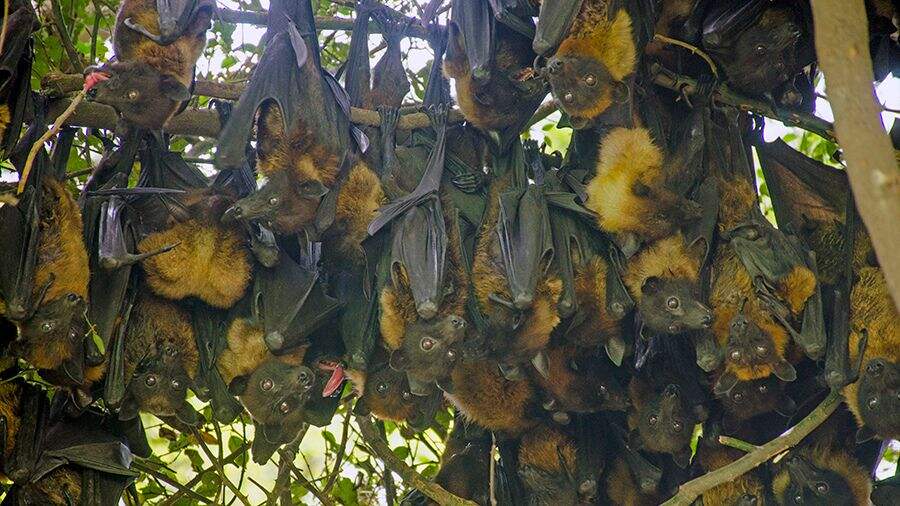
Firoz Shah Tughlaq also raised several structures along the southwest corner of the lake. The waterbody supports a neat ecosystem in the midst of a bustling city, and in this urban forest one can find a small population of creatures including a large colony of Indian flying foxes, large fruit-eating bats

The large tomb of the Tughlaq leader stands at the fulcrum of the L-shaped collection of heritage buildings. Its slightly tapering walls are crowned by a massive dome. Inside are three graves: Firoz Shah’s in the centre flanked by those of his son and grandson. The ceiling and the upper portions of the walls are painted with geometrical and floral designs, but time has worn off much of the ornamentation
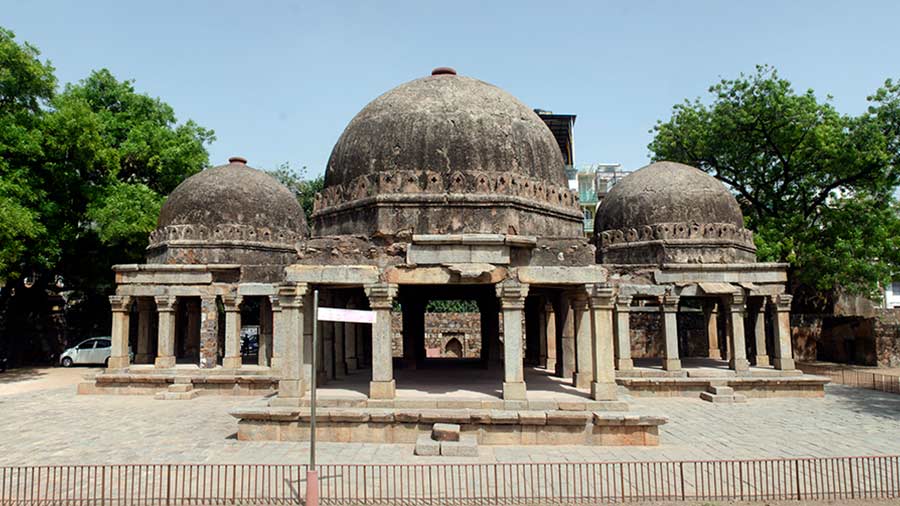
On either side of the tomb complex are two old heritage structures that were once of immense importance. On one side is the madrasa, which was once an important centre of learning and attracted students from far and wide. Today, only some of its domed structures and pillared halls remain. North of the tomb is a three-dome building (in picture), which probably served as a hall for public audience

Said to be once located at the centre of the lake, the Munda Gumbad stands on a mound on the northwest corner of the lake. The square building with sloping walls once had a dome, but it is no longer there hence the name of the structure, which translates to ‘bald dome.’ Four corner stairways lead to the terrace of Munda Gumbad that offers great views of the Hauz Khas

